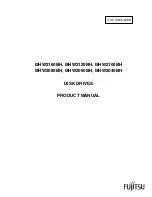
20
20
-0
4
14
Functional Safety KCD2-SCD-Ex1.ES(.SP), HiC2031ES
Planning
3.5
Useful Lifetime
Although a constant failure rate is assumed by the probabilistic estimation this only applies
provided that the useful lifetime of components is not exceeded. Beyond this useful lifetime,
the result of the probabilistic estimation is meaningless as the probability of failure significantly
increases with time. The useful lifetime is highly dependent on the component itself and
its operating conditions – temperature in particular. For example, the electrolytic capacitors
can be very sensitive to the operating temperature.
This assumption of a constant failure rate is based on the bathtub curve, which shows
the typical behavior for electronic components.
Therefore it is obvious that failure calculation is only valid for components that have
this constant domain and that the validity of the calculation is limited to the useful lifetime
of each component.
It is assumed that early failures are detected to a huge percentage during the installation
and therefore the assumption of a constant failure rate during the useful lifetime is valid.
The standard EN/ISO 13849-1:2015 proposes a useful lifetime T
M
of 20 years for devices
used within industrial environments. This device is designed for this lifetime.
Observe that the useful lifetime can be reduced if the device is exposed
to the following conditions:
•
highly stressful environmental conditions such as constantly high temperatures
•
temperature cycles with high temperature differences
•
permanent repeated mechanical stress (vibration)
As noted in DIN EN 61508-2:2011 note N3, appropriate measures taken by the manufacturer
and plant operator can extend the useful lifetime.
Please note that the useful lifetime refers to the (constant) failure rate of the device.
The effective lifetime can be higher.
The estimated useful lifetime is greater than the warranty period prescribed by law
or the manufacturer's guarantee period. However, this does not result in an extension
of the warranty or guarantee services. Failure to reach the estimated useful lifetime is not
a material defect.








































